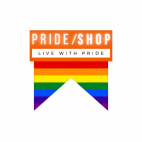Nasty Pig: A New York Queer Fashion Icon
Introduction to Nasty Pig
Nasty Pig is a pioneering clothing and accessories label born in New York City during the 1990s. Founded by creative partners David Lauterstein and Fred Kearney, the brand quickly established itself as a bold force in queer fashion and LGBTQ+ culture.
More than just streetwear, Nasty Pig represents self-expression, identity, and pride for many in the LGBTQ+ community. It’s also a brand rooted in activism—donating to LGBTQ+ causes, promoting visibility, and fostering community power through fashion.
How Nasty Pig Began
A Vision Born in Manhattan
Launched in 1994, Nasty Pig emerged at a time when mainstream fashion offered little acknowledgment to queer culture. Inspired by the spirit of New York City’s gay community, Lauterstein and Kearney set out to create clothing that embodied sexual freedom, confidence, and urban rebellion.
From day one, the brand channeled inspiration from underground club scenes, fetish fashion (think leather, harnesses, and latex), and gritty streetwear aesthetics.
The Cultural Climate of the ’90s
Nasty Pig’s origins are deeply intertwined with the challenges and creativity of the queer community during this era, shaped by:
- The ongoing impact of the HIV/AIDS epidemic.
- The electric atmosphere of New York’s club and nightlife scene.
- A collective push among LGBTQ+ people to reclaim identity through art and fashion.
As a result, Nasty Pig became both a fashion movement and a subversive cultural statement.
Style and Brand Identity
Where Fetish Meets Urban
Nasty Pig is known for its dynamic blend of edgy fashion elements. Its signature style showcases:
- Urban athletic wear like joggers, hoodies, caps, and sneakers.
- Queer erotic wear, emphasizing body-conscious fits, sheer textures, latex, and leather accessories.
- Bold graphic elements with provocative slogans and symbols drawn from underground culture.
This fearless fusion has made Nasty Pig a cornerstone of queer style worldwide.
Distinctive Symbols and Visual Language

The design language of Nasty Pig leans into rebellion, provocation, and subversion:
- Frequent use of the signature “NP” logo.
- A bold color palette featuring blacks, greys, reds, and energetic neons.
- Reimagining classic sportswear with a distinctly queer, fetish-inspired lens.
Rooted in Queer Identity
Authentic LGBTQ+ Representation
Nasty Pig unapologetically embraces a queer-first ethos. It was never designed to cater to a straight, mass-market audience. Instead, it celebrates all forms of queer masculinity, often showcasing tattooed, muscular, and diverse bodies through a lens of raw sexuality and strength.
Activism Through Fashion
The brand leverages fashion as a vehicle for activism, regularly participating in and supporting:
- New York City Pride events.
- Charity initiatives for HIV prevention and treatment.
- Campaigns centered on gender equality and queer inclusion.
Nasty Pig uses its visibility to promote queer empowerment and cultural change.
Expansion and Global Reach
Retail Presence
Its first store, located in New York’s Chelsea neighborhood, quickly became more than a retail shop—it evolved into a community hub for activists, artists, and nightlife personalities.
Today, Nasty Pig is accessible through:
- Its iconic flagship store in Manhattan.
- A thriving international e-commerce platform.
- Handpicked retail partners that champion alternative fashion and LGBTQ+ designers.
Global Influence in the Queer Community
While not a household name in mainstream circles, Nasty Pig enjoys a strong reputation within LGBTQ+ subcultures across North America, Europe, and Australia. From queer DJs and drag superstars to visual artists and club kids, the brand has become a go-to source for performance gear and identity wear.
Influence and Collaborations
Intertwined with Drag and Nightlife
Nasty Pig’s designs frequently appear in drag shows, queer music videos, and underground art. The brand has formed deep ties to the New York ballroom scene and is frequently seen on stages and runways of RuPaul’s Drag Race alumni and other queer icons.
Impact on Queer Fashion and Streetwear
The brand’s bold vision has inspired a new generation of independent designers and queer-led streetwear labels. These emerging voices continue the tradition of using fashion as a way to affirm queer identities and disrupt mainstream narratives.
Social Responsibility and Advocacy
Community Engagement
Nasty Pig commits a portion of its revenue to vital LGBTQ+ charities, with emphasis on:
- HIV/AIDS education and outreach.
- Programs supporting homeless queer and trans youth.
Diverse Representation in Media
From casting real people in its campaigns to highlighting non-conforming and body-diverse models, the brand seeks to amplify queer representation far beyond tokenism.
Marketing with a Message
Fearless Visual Campaigns
Known for its provocative and empowering ads, Nasty Pig ensures marketing reflects its unapologetic stance on queer sexuality and self-expression. Expect:
- Erotic photography with unapologetic queer imagery.
- Taglines layered with humor and political edge.
- A wider message that sexuality is powerful and political.
A Rejection of Corporate Pinkwashing
In contrast to brands that capitalize off the LGBTQ+ community only during Pride, Nasty Pig is recognized as an authentic voice—a label created by queers, for queers. Its year-round commitment to the community makes it a respected force in the fashion industry.
Critics and Controversies
Navigating the Conversation Around Sexuality
Some critics question whether Nasty Pig overemphasizes a hypermasculine, hypersexual image. But supporters argue that it offers a much-needed space to reclaim masculinity through a queer lens—where sexual expression becomes a form of resistance.
A Deliberate Niche
The brand intentionally eschews mass appeal, choosing instead to uphold its values and roots in queer subculture. Its niche identity is both a strength and a form of cultural preservation.
Iconic Products
What Nasty Pig Is Known For
- Fitted sweatshirts and joggers with rugged detailing.

